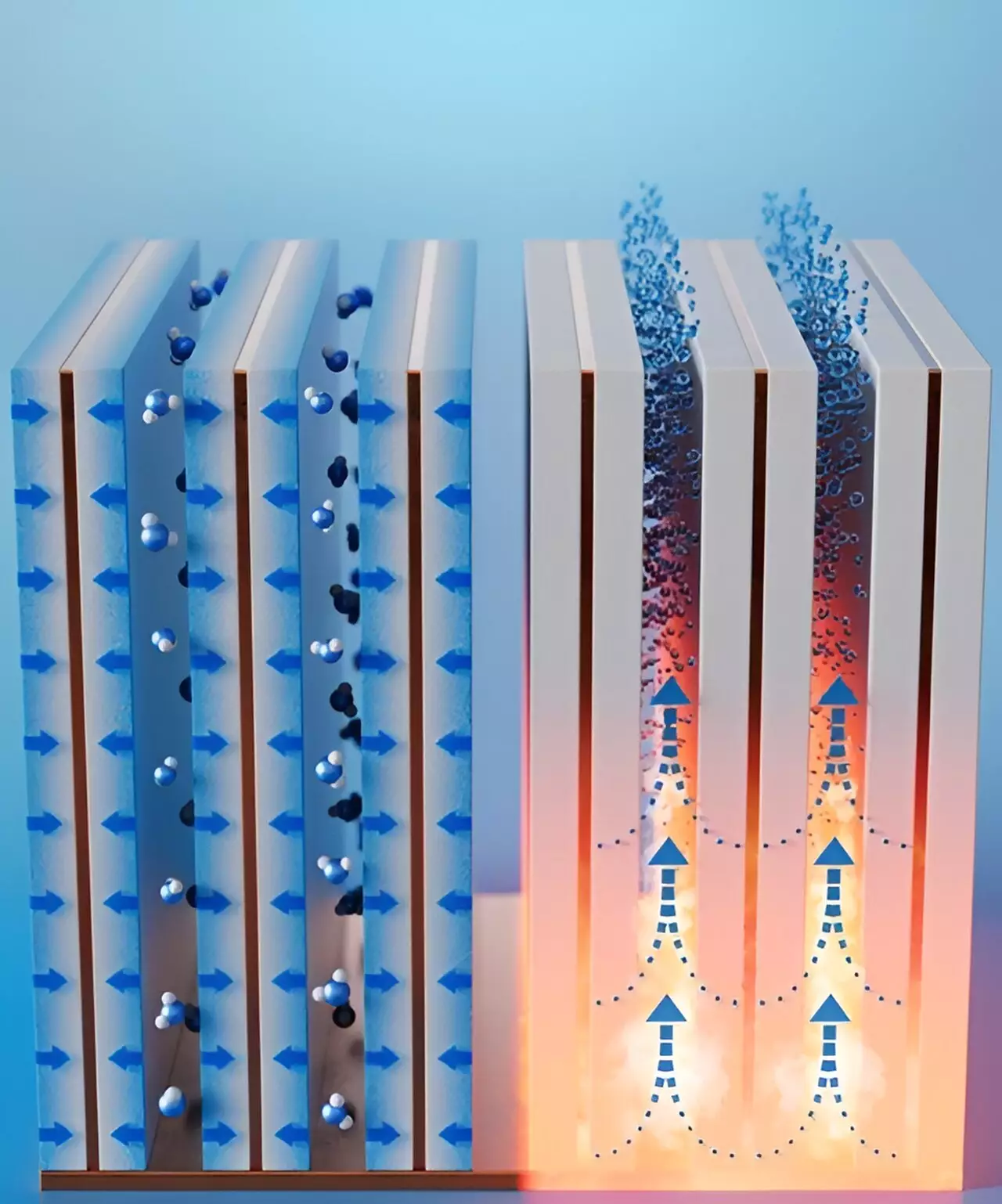Access to clean, safe water is a global issue, with many regions facing scarcity of this vital resource. The dependence on local bodies of water for water supply makes it challenging for dry regions to meet the growing demands for water. However, researchers have come up with a unique solution to harness the water vapor present in the air, even in arid locations.
In a recent study published in ACS Energy Letters, researchers unveiled a compact device designed to extract moisture from the air and generate potable water. The device features absorbent-coated fins that trap moisture and release it as clean water when heated. This innovative approach could revolutionize water harvesting, especially in areas with low humidity levels.
Unlike previous systems that focused solely on material development, the researchers behind this device took a different approach. By co-designing the water-adsorbent fins with material properties, they were able to create a more efficient and compact system. The use of copper foams coated in a commercially available zeolite proved to be a game-changer in moisture capture.
To showcase the effectiveness of their device, the researchers conducted proof-of-concept demonstrations. They constructed a device with 10 small adsorbent fins placed closely together on a copper base plate. This setup allowed for maximum moisture capture from air with low relative humidity levels. The results were promising, with the fins saturating and releasing trapped moisture quickly at high temperatures.
The implications of this technology are far-reaching. With the ability to produce up to 1.3 liters of potable water per day in air with 30% relative humidity, this device could provide a sustainable water source in arid regions. The researchers suggest integrating the device into existing infrastructures that produce waste heat to make water harvesting more cost-effective.
As with any new technology, further development and optimization are key to realizing its full potential. With continued research and innovation, this water harvester could become a standard solution for water scarcity issues globally. By leveraging waste heat from buildings or transportation vehicles, this device could offer a practical and efficient way to generate clean water in areas with limited water resources.
The development of this compact water harvester represents a significant step towards addressing the challenges of water scarcity. By harnessing the moisture present in the air, this technology offers a sustainable and cost-effective solution for water harvesting in arid regions. The future looks promising for this innovative approach to clean water access.


Leave a Reply